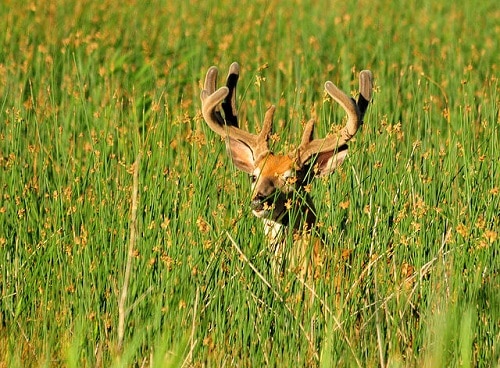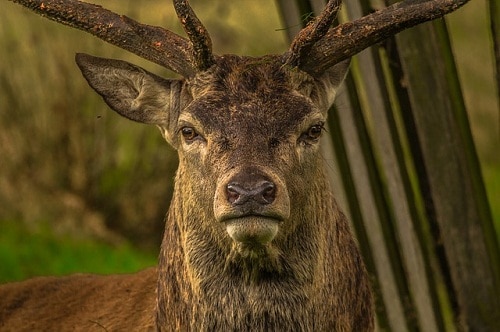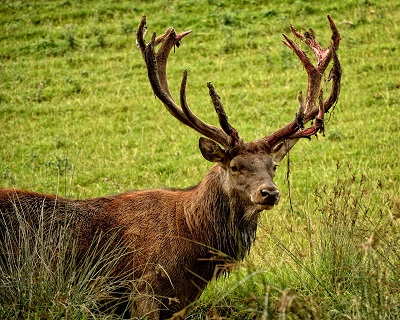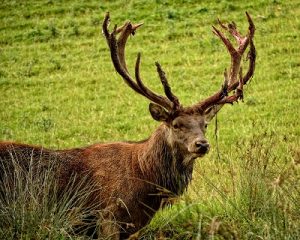The foothills of the Rocky Mountains rolling through Wyoming was the location of the most memorable buck scar I saw as a kid, a memory that has stuck with me and turned into a lifelong fascination with the simple activity of a buck rubbing its antlers against a tree.
It wasn’t until later that I learned how to incorporate buck rubs and scrapes into my hunt in order to track bucks and increase my odds of landing a big one. You can do the same by utilizing these tips that will help you understand what buck rubs and scrapes mean and pick up on the clues they contain.
5 Things You Need To Know About Buck Rubs And Scrapes
#1. Bucks leave primer pheromone scent in their rubs.
- The scent accomplishes many things for the buck. First of all, it can attract does, a particularly effective mating call and flirting strategy of the buck.
- Along the same line, the scent can hinder the sex drive of younger and weaker bucks. This increases the mating chances of the stronger buck, which can come into play with territorial concerns.
- The scent also displays the buck’s social status. Larger, more prime bucks leave stronger scents which stimulate does and detract the approach of younger bucks.
#2. Buck rubs and scrapes help the animal ‘blow off steam’ in different ways. This is very helpful in identifying buck size, age, and location.
- Rubbing against a firm tree strengthens the buck’s neck and shoulder muscles, making the animal fitter and ready to fight if necessary.
- It also releases tension and helps a buck relax. It works sort of as an anxiety reliever after a long commute or stressful encounter.
- Rubbing and scraping marks territory, helping the buck to feel more at home and maintain a sense of control.
- Trail rubs are made by bucks that are moving through their home territory, typically between feeding areas and nesting cover. If you see frequent rubs, it may mean the buck spends the majority of its time in that area. Keep this in mind during scouting and your actual hunt. On the other hand, boundary rubs are made before rut, earlier in the season, as a buck is marking his territory. If you are out in early season these make great stand sites, but other than that you’ll have more luck scouting trail rubs later on. Rut rubs occur during peak mating season when the buck’s hormones are at the highest levels. The buck needs to release testosterone and may shred small trees and shrubbery. If you notice this activity and it wasn’t there a few days ago, set up stand because you are in the prime spot!
#3. As a buck gets older, it rubs and scrapes more often- up to 3-4 times as much as younger bucks.
- This means that the scrapes you are seeing while hunting likely are the marking of an older buck. This is great news for you! Keep your eyes peeled for similar markings along your route and use them to zero in on the buck’s location and overall territory.
- Older bucks start rubbing earlier in the year, with bigger marks and more frequent occurrences.
- All bucks old and young will rub and scrape smaller trees, three or fewer inches in diameter. Young bucks typically won’t scrape larger trees, as this can cause tension and disputes.
#4. Young bucks don’t have the strategy that older bucks do.
- Younger bucks have a tendency to scrape and rub without much theme because they are inexperienced and are just trying to mark up as much territory as possible. Older bucks know how to mark an area and identify it as theirs. When you’re trying to get the largest buck possible, pay particular attention to how consistent and numerous the scrapes are in an area.
- If scrapes are similar but few and far between, the buck is young and won’t be the trophy shot you’re after.
- Don’t be tricked by one scrape that is inconsistent in a line of consistent scrapes. This is likely caused by a young buck passing quickly through the area.
#5. What to look out for and keep in mind.
- Wide open field rubs are likely made early season, and the buck won’t return to that open area until after shooting light is passed. You’ll want to find a nearby area of grazed trees and identify other rubs. These will be more helpful in locating the buck during hunting hours.
- If you find rubs that are dried up or discolored, they were probably made in a previous year. Don’t spend much time on those because if the buck were still in the area, there would be fresh rubs.
- Singular and random rubs aren’t going to be very useful during your hunt. Look for connected series of fresh rubs as described above and don’t get too excited the first time you see one. You want a trail, marking over an entire area, not just a one-off.
- Landing the biggest buck will be done in fall after strong scouting, back rub and scrape tracking, and trial and error. Return to areas of consistent rubbing several times and you will greatly increase your odds of landing that trophy buck!
Conclusion
Looking for buck scrapes and rubs is an essential part of fall hunting. When done correctly, this process will greatly increase your chances of making a kill and having something to brag about.
I suggest doing some web research to get a feel for what these scrapes and rubs look like and identify lookalikes when out in the field. Another my article best shooting sticks 2018, check it if you need buy a shooting sticks.
I hope you have enjoyed this article! I’ll be back out in Wyoming each year looking to find the next gorgeous collection of scrapes and rubs. If you found this to be helpful, please share on your social networks. I’m interested to hear your thoughts on this topic – let’s get a conversation going in the comments section, that way we can all learn more tricks of the trade.
Featured Image via USFWS Mountain-Prairie







